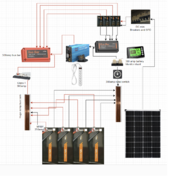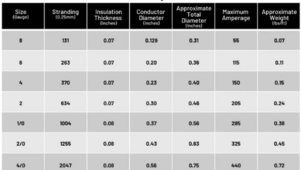Dadoftheturkeykids
New Member
I am trying to size a class-t fuse for my offgrid setup.
My inverter is 3000w continuous+ surge
I will only be pulling 2400 continuous at any given time but I want my fuse to cover up to 3000watts.
I understand that power out is not equivalent to power in, because of conversion losses.
Can someone please explain the formula to find what amperage is being drawn from my batteries @ 3000watts?
I'm not sure if I calculate the actual common voltage of my battery bank @13v-13.2v
Or just simplify it to 12v.
Also if I'm calculating for efficiency of 85%, does that mean that I multiply the output wattage by 1.15?
Sorry if this sounds too basic for me not to understand but I'm in need of some clarification.
Thanks in advance

My inverter is 3000w continuous+ surge
I will only be pulling 2400 continuous at any given time but I want my fuse to cover up to 3000watts.
I understand that power out is not equivalent to power in, because of conversion losses.
Can someone please explain the formula to find what amperage is being drawn from my batteries @ 3000watts?
I'm not sure if I calculate the actual common voltage of my battery bank @13v-13.2v
Or just simplify it to 12v.
Also if I'm calculating for efficiency of 85%, does that mean that I multiply the output wattage by 1.15?
Sorry if this sounds too basic for me not to understand but I'm in need of some clarification.
Thanks in advance

Last edited:





